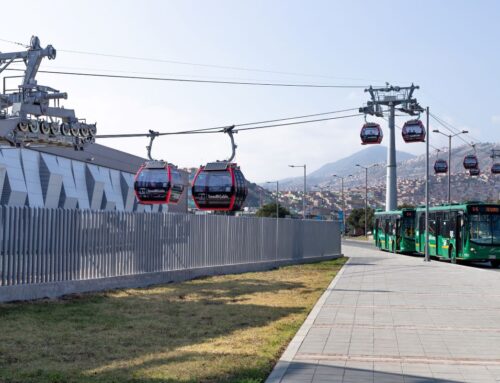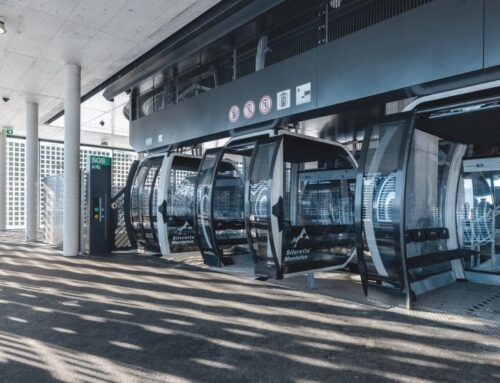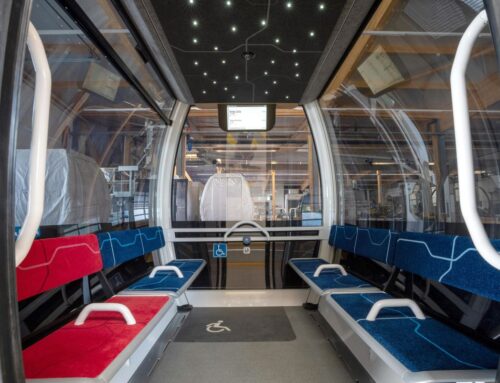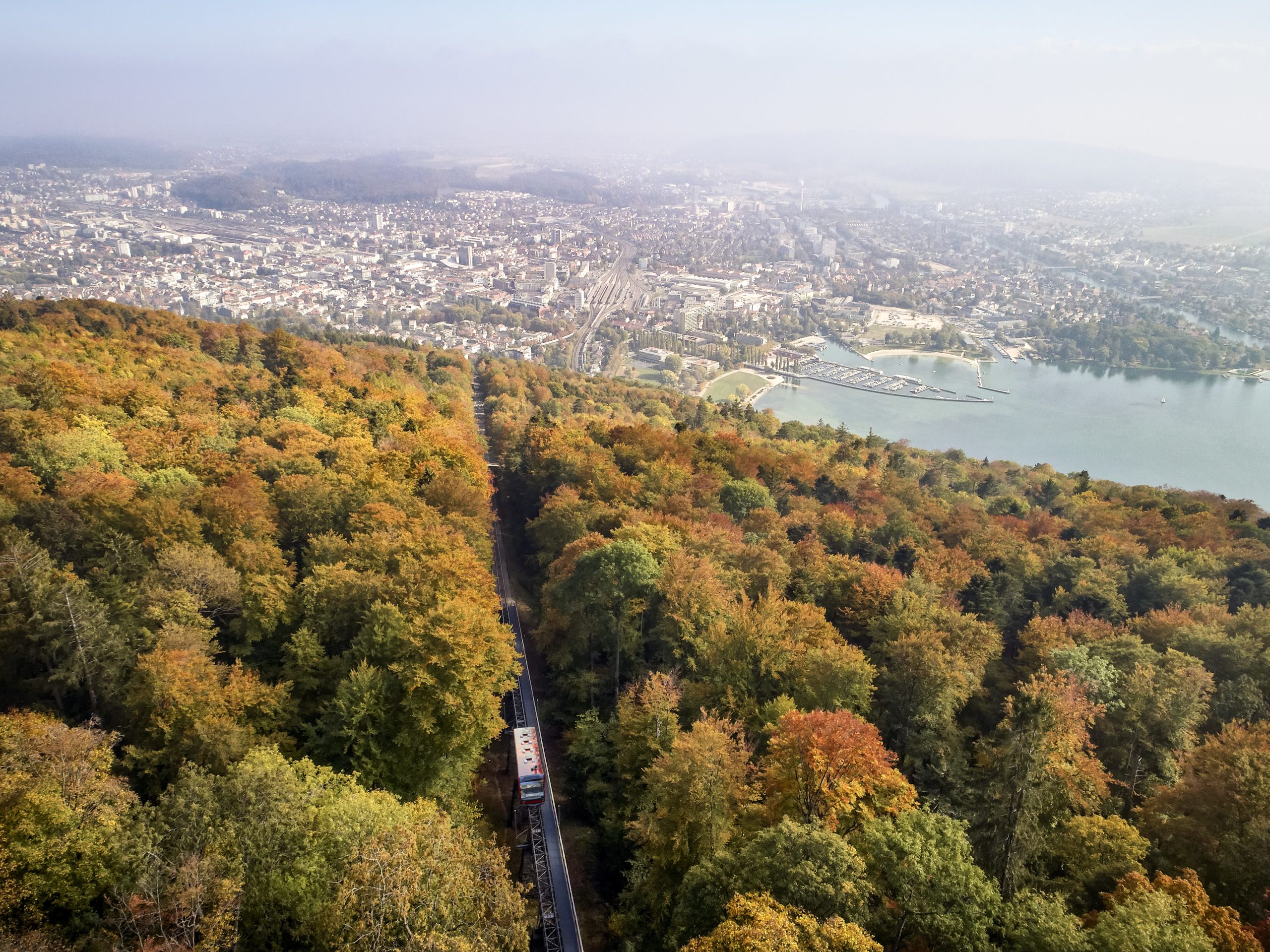
Cities, Digitalisation & Innovation, SI Urban 2/2022, Tourism
New system for aerial tramways – EFFECTIVE CONTROL OF ENERGY FLOWS
If you look at the energy balance of aerial tramways, one particular feature stands out. Part of the performance range on a section of the route lies within the positive range. On the second section of the route, it is then negative.
This means the engine is braking here. The fact that a braked engine is not an efficient drive source for a cable car was always clear to Oliver Duvanel, an electrical engineer in the School of Technology & Architecture at Luzern University of Applied Sciences and Arts.
However, seven years ago, it was only when working in the area of automation of hydropower plants located in the mountains that the idea occurred to him to store energy in the same way as in hydropower plants.
On this basis, extensive measurements were taken and a feasibility study was conducted with respect to technical implementation and profitability. The key element of the present energy storage systems for aerial tramways was then created at the centre of excellence for digital energy and electric power.
Duvanel was supported here by a team of colleagues from Luzern University of Applied Sciences and Arts as well as UVEK (Swiss federal department of environment, transport, energy and communications). As a promising system, the federal department supported the cable car project through the 2050 energy strategy in public transport.
The aim of this programme is to promote public transport. ABB Schweiz, FREY AG STANS and DOPPELMAYR/GARAVENTA were involved as industry partners.
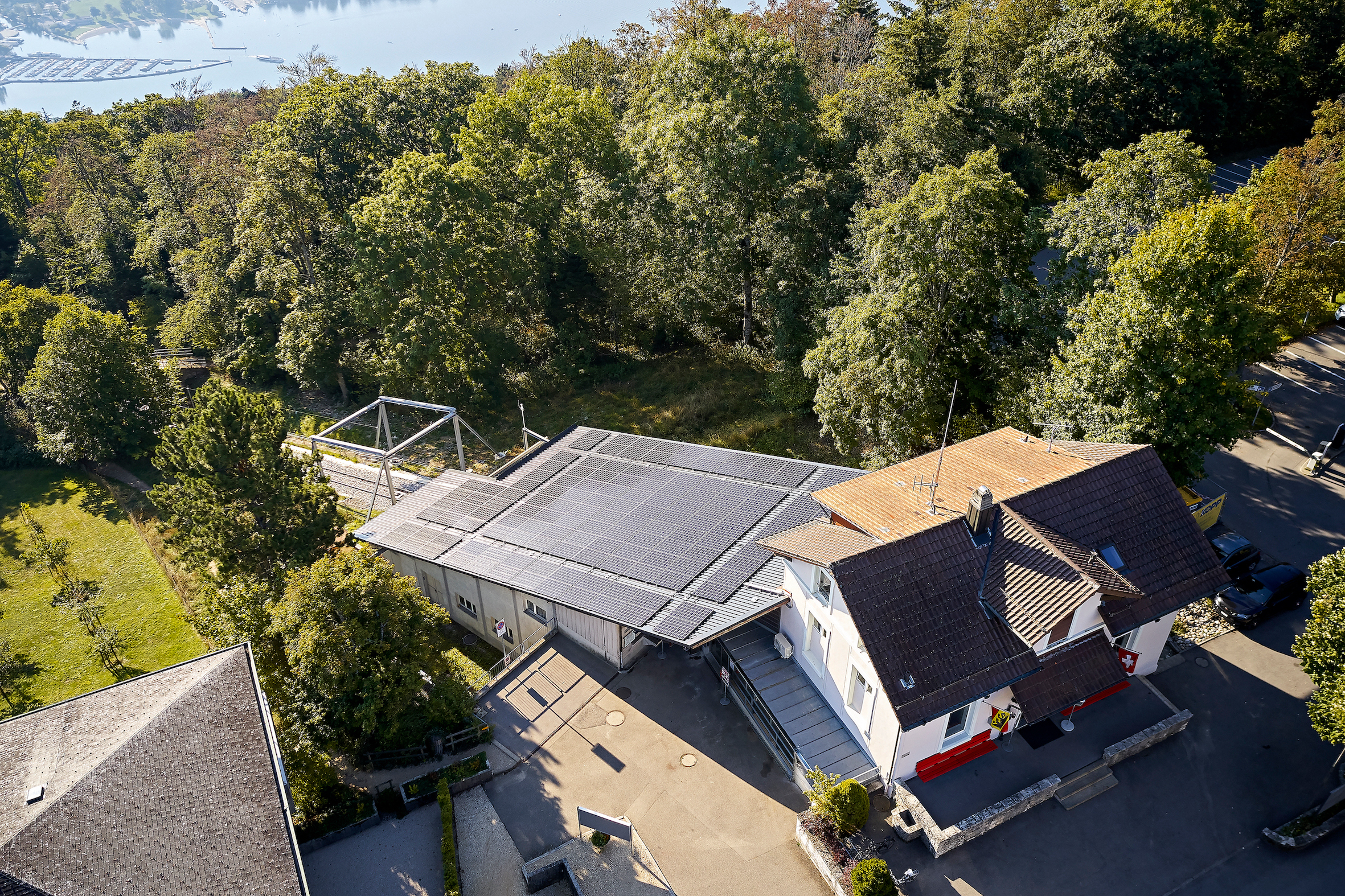
How it works:
“A funicular railway comprises two carriages, which are connected by a traction cable. When a carriage departs from the bottom station, it needs drive power, in order to gain height.
Once it has covered a good half of the route, no further energy is required, as the downwards track and associated traction cable are heavy enough to pull the carriage up. The carriage travelling downwards now actually requires braking.
The cable car is therefore constantly alternating between energy input and output,” Duvanel explains the principle. “The new system now ensures that the energy released here is recovered locally,” he elaborates.
For introduction of the new energy system, two requirements need to be met: first, a PV installation on the station roof or the desire to construct one; second, space for two control cabinets.
In addition to the PV installation, the battery – with storage capacity of 68 kWh – forms the central component of the energy system. It stores both the recovered braking energy until it can be used for the next ascent and surplus solar power from the PV installation.
In the future, it is intended that some of the stored energy will be kept in reserve, so that the carriages can be returned to the stations in the event of a power failure. The diesel generator previously used for this purpose will therefore become redundant.
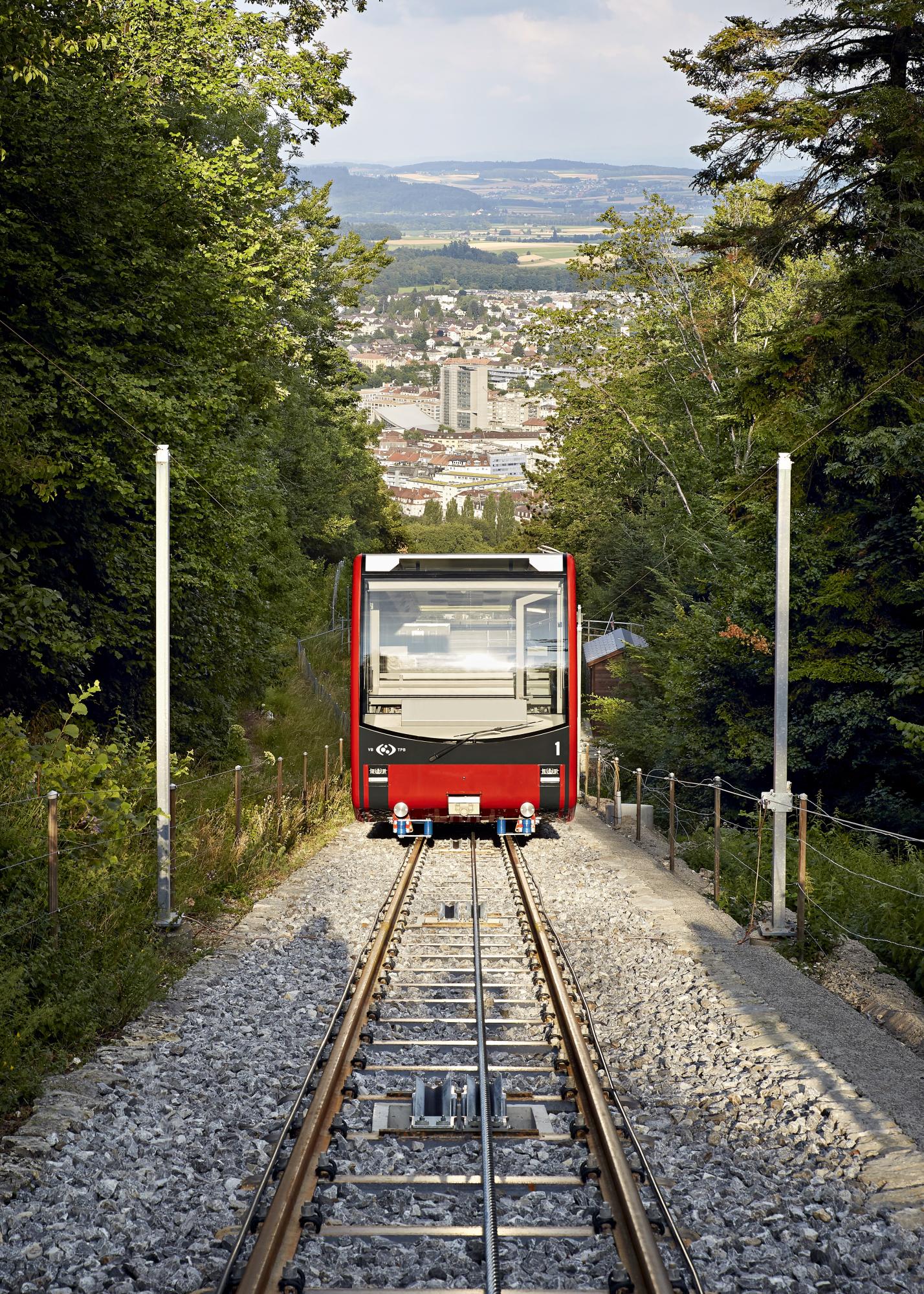
Practical testing
Practical testing of the new system was carried out on the Biel-Magglingen funicular railway. There is a very specific reason why the 1,700-metre route of the installation constructed in 1887 was the perfect trial venue.
“We still needed a suitable test site for our basic concept and the Biel- Magglingen funicular railway was ideal. It was interested in the concept and the adaptation work was very easy, as the railway was undergoing a fundamental overhaul,” Duvanel justifies the choice of test site. Thanks to the modification work, the energy is now distributed across four participants: the public grid, the PV installation on the roof, the main drive and the auxiliary systems.
The new storage system specifically ensures optimal use of the last three. They will be supported by the public grid only if the load becomes too great. This concept seems to work even in continuous operation (previously around 10 months).
During the test phase, the power costs fell by around 30 percent. This is appreciated not only by the team of researchers from Luzern University of Applied Sciences and Arts but also by the cable car operators, as power accounts for around half of the cable car operating costs.
Outlook
Successful testing of continuous operation is now being followed by industrialisation and improvement. “In Switzerland alone, there are around 200 aerial tramways to which
the system could be applied. Every year, around five to ten of these installations require renovation.
That is already a figure at which it is worthconsidering how the concept can be offered conveniently,” Duvanel explains the next steps. Indeed, all these cable car types could theoretically be modified, but the expert knows that this step is also not cost effective for all of them. “I would say it is actually worth thinking about this step only if the installation has to be refurbished anyway, otherwise the cost would certainly be too high. The location of the station is also critical.
As the PV installation is a central aspect of our system, it also needs to be usable optimally, in order to achieve the values measured in Biel- Magglingen. Buildings on north-facing slopes with only limited sunlight are therefore not suitable,” he elaborates. The amortisation period for investments in the pilot installation is expected to be fifteen years. For future, commercial installations, an amortisation period of ten years is conceivable.
